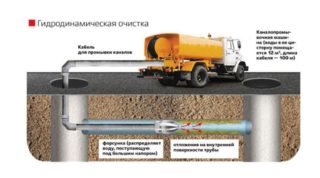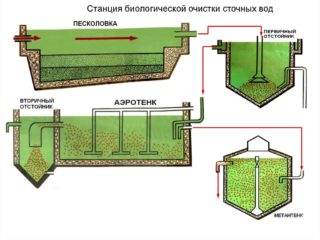During the construction of a sewage system in a private house or in a country house, storage wells are necessarily erected. Regardless of the type of structure, they must be cleaned. If you know how to do it correctly, problems with the use of sewage lines will not appear.
Well cleaning frequency
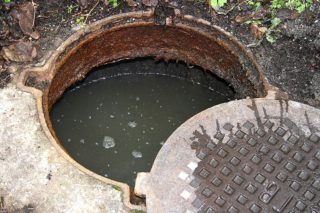
When sewage flows into the well, heavy particles settle to the bottom in the form of silt, and clarified water remains on the surface. Gradually, an increase in the silt mass occurs, which leads to a decrease in the throughput of the treatment plant, preventing the efficient operation of the sewage system. If the contents of the well are too silted, harmful bacteria actively develop in it, which, when penetrating into the ground, negatively affect the environment and the health of the residents of the house.
The frequency of cleaning activities depends on the operational characteristics of the structure:
- volume;
- configuration;
- the presence of filtration plants.
Usually the procedure is carried out once a year, but sometimes this period increases to three years, and in some cases it is necessary to call specialists once every three months.
Cleaning of sewer wells is planned and emergency. The first method is carried out after filling the tank with wastewater by three quarters of its volume. The second is performed with a sharp decrease in the productivity of the treatment plant, as a result of which the functioning of the entire treatment system is disrupted.
Neglecting to carry out planned measures and calling the sewers, when the treatment plant can no longer process wastewater, leads to rapid wear and tear of the system. Its renovation is expensive. To avoid an emergency, cleaning must be done on time.
Basic cleaning methods
Three methods are most commonly used for pumping wastewater from wastewater treatment plants and cleaning pipes. Each of them has its own advantages.
Using a sewage suction
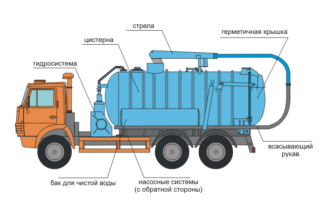
Special equipment, consisting of a tank and a vacuum pump, is used for sewage works. The advantage of the technology is that such a procedure can be carried out at any time of the year. The budget cost is also important. Sludge pumps are used to remove the sludge layer in wells, septic tanks and highways made of plastic and concrete. After purification, liquid waste is transported for further disposal. Scheduled pumping out of sewer wells is usually done in this way.
Vacuum method
It includes such types of manipulations as cleaning the sewage system and pumping out dirty waste with a vacuum pumping device of increased power. The pump is capable of removing suspended solids with fractions of any size. The mixture is pumped out into a special tank, and then transported to the treatment plant. It differs from the previous method in productivity due to the use of more modern technology.
Hydrodynamic method
The technique is safe for the environment and human health, the cost of such a service is affordable for owners of household plots.
The advantage is that the pressurized water flow washes away almost all organic and inorganic deposits on the walls and bottom of the well. Hydrodynamic cleaning is used not only for well tanks, but also for clogged pipe lines.
If silting and contamination is strong, it is recommended to combine this technique with pumping out with a vacuum pump.
Auxiliary techniques
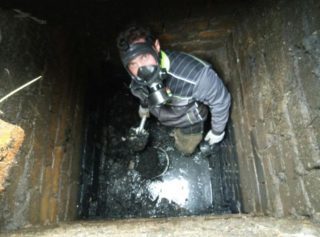
To clean wells with stubborn dirt, additional methods are used:
- heat treatment;
- the use of chemicals;
- cleansing by hand.
The first method is similar to purification using hydrodynamics, but the water flow supplied under pressure is heated to 120–160 degrees. Hot water removes hardened deposits and layers of fat better. The method is used only in difficult cases, since it is technologically difficult to implement.
When treated with chemical reagents, mud and fat deposits are destroyed at the molecular level. Chemicals are in a foamed state. This makes it possible to clean the bottom and vertical surfaces of the sewer tank. The chemical method is effective and does not harm the environment and human health, but it is rarely used due to the high cost of cleaning agents.
The manual method allows you to achieve the complete elimination of any formations. Purification is carried out manually after pumping out the effluents, when no more than a cubic meter of sediment remains on the well bottom. The layers are scraped off with a spatula and removed from the tank using a conventional bucket.
Toxic volatile substances are formed in sewerage lagoons. When manually cleaning in the well, you must carefully follow the safety rules and wear specialized equipment: protective masks, gloves. On the surface, the worker must be insured by at least two people.
Reducing the frequency of cleaning activities
Ways to reduce the frequency of cleaning while maintaining the operational characteristics of the sewer well:
- Increase the volume of the tank. Its calculation is initially carried out based on the number of residents of the house. If the number of residents has increased, the well will fill up faster, it will have to be cleaned more often. To avoid this, you can add volume to the structure by connecting an additional chamber with an overflow pipe.
- Use active sludge mass. The complex of beneficial bacteria absorbs pathogens and accelerates the decomposition of organic matter in sewage. They feed on organic suspensions in the wastewater, making the liquid much cleaner.
- Purchase a bio-purification station. The most expensive option, but it will pay off over time. The installation differs from a simple well tank in that wastewater treatment is possible up to 95 percent. As a result of the activity of bacteria-purifiers and the work of a complex filtration system, almost all harmful suspended solids are removed from the water, so the processed liquid can be used for irrigation.
If there are small deposits in the sewer line, it is enough to rinse it with running water. The hatch of the inspection well is closed with a stopper, and a stream of water is passed under a small pressure through the main line. Then the plug is removed, the water at high speed goes into the well tank and rinses it
The choice of cleaning method depends on the degree and type of contamination. Usually one or two standard processing methods are sufficient. Modern sewage treatment equipment is equipped with all the necessary equipment.
If the network requires major cleaning, it will be necessary to process not only the well, but also the pipeline itself. In this case, thermal cleaning and washing with chemicals are additionally used.

